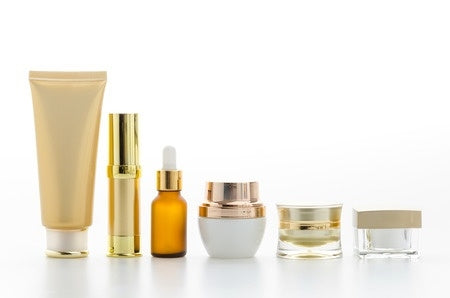Blog
What's the Best Way to Layer Skincare Products?
We’ve written about how to layer skincare products before, and this time we’re going a bit deeper. In this post, learn how to layer skincare products the right way to help maximize the benefits of your topical treatments. Shop Antioxidant Face Oil When Should Oil Be Used in Skincare Routine? So you may get some conflicting advice when it comes to when to apply a face oil. Some advise to apply oil before moisturizer, so that it absorbs right into your skin before you slather on more hydration. Others say to apply it after your moisturizer, so that it can help to lock in the hydrating ingredients. To us, it makes more sense to do the latter – apply it after your moisturizer so that it seals everything in. But, if you read our entire blog post, you’ll know that there really isn’t a perfect answer. Just use the face oil! What is the Order of Skin Care Layers? You’d think that a topic like how to build a skincare routine would be relatively easy. Yet, with all the options available to choose from – creams, serums, toners, essences, oils, etc., – finding the right products for your skin can get complicated. Add in how to use these products to maximize their benefits, well that just adds another level of complexity. If you’ve already got a good skincare routine set up and want to learn the best way to layer skincare products, know that the advice is more a rule of thumb rather than anything set in stone. The most common recommendation is to go from thinnest in texture to heaviest in texture, but even if you get it wrong, nothing bad will happen. Breathe a sigh of relief! Want to get the glowing skin of your dreams? Subscribe to our newsletter list and download our free guide: 5 Tips For Glowing Skin. How Important Are the Steps for a Skincare Routine? In general, it’s recommended that you apply your products in order from thinnest to thickest. The rationale is that this helps to ensure the best possible absorption. However, if you mess things up, and the order gets switched around, it’s unlikely to do much harm. That’s because very few products create a bulletproof layer that nothing can penetrate. So, even if you put your heavy cream on before a hydrating serum, the world won’t end. The absorption of that serum through the cream may happen a lot more slowly and you may not get as much to your skin as you would have if you’d applied it first. Additionally, since the goal of the cream is to help lock in the hydration from the serum, you may lose that benefit as well. The same applies to active treatment serums. Ideally, you’ll want the ingredients as close to your skin as possible (think vitamin C, retinoids etc) so it’s best to apply these first for maximum absorption. Then follow with a cream, lotion or oil. Here’s the Correct Order of Skin Care Products Cleanser. It probably doesn’t come as a surprise that cleansers top the list. Single cleanse, double cleanse, warm water splash (often this is fine for many of us in the morning), it should always be the first step. Toner. We’ve always maintained that toners are optional. Not everyone needs to use them and they’re one of the products that you can leave out of your routine easily. However, toners can be useful to help introduce active ingredients like those found in acne treatments. Serum/Exfoliant. Exfoliants and serums like our Bespoke Vitamin C Serum or A is for Anti-Aging Serum often contain lots of active ingredients like antioxidants, retinoids and peptides so it’s a good idea to apply them as close to clean skin as possible. They’re the products that deliver the most skin benefits so it’s important to ensure their optimal absorption. Moisturizer. Whether you opt for a cream or a lotion, moisturizers help to hydrate and plump skin. They can also help to lock in moisture, preventing dry skin. Eye Cream. Sunscreen (AM)/Face Oil (PM). Sunscreen should always be your last step in the morning before you apply make-up. At night, face oil is the very last thing to put on before you get your zzz’s in. If you want to use a face oil in the morning, put it on before your sunscreen. Remember not to apply too much, especially if you’re layering as your skin can only absorb so much. Let us know if you found this helpful.
Learn moreHow To Get More Radiant Skin
Glowy, radiant skin is a sign of healthy skin – a look that that we all aspire to. Consistently using the right combination of products is key to radiant skin. Learn more in this post. SHOP RADIANT SKIN SET What Robs You of Radiant Skin? Lack of sleep, stress, aging and even what you eat can rob your complexion of its radiance. Skin that looks dull and tired can become luminous and glowing by using the right products along with some expert tips. Here’s how to achieve radiant skin. 4 Tips for Radiant Skin Cleanse. Start with a clean ‘canvas’ by removing dirt including oil, pollution and make-up that can leave skin looking dull. Choose between two foaming cleansers to suit most skin types: AHA-Mazing Clean Cleansing Gel – Exfoliate, cleanse and hydrate with this foaming cleansing that soothes skin and senses. Triple combination of alpha hydroxy acids (AHAs) and a refreshing mint scent. Cloud Nine Foaming Cleansing Crème – Clean, moisturize and protect skin with this gentle, foaming cleanser. Rich with antioxidant and anti-inflammatory ingredients and ideal for aging and sensitive skin. Exfoliate. Nothing strips away your glow more than having a layer of dry, dead skin cells sitting on your skin’s surface. Exfoliation helps to remove these cells and brightens skin almost immediately. You can exfoliate physically with a scrub or chemically with an acid. When it comes to facial exfoliation, we lean towards chemical exfoliation, which only penetrates through the skin’s uppermost layer. Scrubs and polishes are more prone to aggressive use, which can lead to skin irritation. In addition to our AHA-Mazing Clean Cleansing Gel, which exfoliates and cleanses, our Bespoke Vitamin C Serum, provides light exfoliation. Brighten. As we age, skin can become unevenly toned due to age spots, melasma, etc. The following ingredients can brighten skin: Niacinamide. Lightens skin discolouration and fades age spots by decreasing the number of melanin transferred to pigment-producing cells (melanocytes) to skin cells by more than half. Find niacinamide in A is for Anti-Aging, where it is combined with Phenylethyl Resorcinol, another skin brightening agent and retinaldehyde, for the ultimate in age prevention properties. Vitamin C. Found in our Bespoke Vitamin C Serum, it brightens skin by disrupting the production of melanin, a skin pigment that causes discolouration and age spots. Because the two ingredients above do so much to improve skin’s glow, we’ve combined A is for Anti-Aging and our Bespoke Vitamin C Serum into the Radiant Skin Set. When used together regularly, these serums will help to illuminate your complexion. Expect to see results within a few weeks and optimal results in about three months. Other ingredients that can help to brighten skin include lactic acid, arbutin, kojic acid and licorice. Hydrate. Dry and dehydrated skin looks dull and may even appear more wrinkled. Although you may not need a dedicated moisturizer, it’s important to incorporate products that can help to replenish and lock in moisture. In a previous post we discussed how to choose a moisturizer and our Daily Infusion Moisturizer provides a perfect balance of the 3 types of ingredients needed to keep skin hydrated. Fake It Till You Make It! While you’re waiting for results from topical treatment to kick in, you can rely on make-up, which helps to deliver an instant glow. Look for products that contain minerals like mica, which reflect light to deliver radiant skin allover.
Learn moreHow to Layer Skin Care Treatments
A topic that seems to generate a lot of confusion is how to layer skin care treatments. In a world of serums, essences, concentrates, emulsions, moisturizers and toners, the confusion probably isn’t all that surprising. I hope that this post helps to clarify how to do it right. How to Layer Skin Care Treatments Right While it is possible to layer most skin care products, there are a few steps that will help you to do it properly: Start With a Clean Canvas. Before applying any products to your face, cleanse it to remove dirt and make-up. This helps to create a clean base ensuring that the products you apply will be absorbed by the skin. Apply in the Correct Order. Apply treatments in order of weight and consistency, starting with the thinnest (runniest) in texture first. If you plan on applying two products similar in consistency, apply the one that addresses you major skin concern(s) first. Don’t Apply Too Much. Your skin can only absorb so much so start with a small amount and gently press into the skin. You shouldn’t have visible product remaining on the surface before applying the next one. Don’t Apply Too Many Products. A general rule of thumb is to layer up to 3 products, waiting about a minute between applications. This will allow products to be absorbed, leaving skin looking smooth and balanced vs gooey and messy. Finish off with Sunscreen. Sun protection should be the last thing you apply to skin. Sunscreens earn their SPF rating without any product going on over them. While this would be the way to do it in an ideal world, many of us use foundation and make-up. If that’s the case, apply it over your sunscreen. Here’s an example of how to layer skin care products: If you like to use toners, apply this first. Follow with a target serum treatment like A is for Anti-Aging (PM) or Bespoke Vitamin C Serum (AM). Moisturize (Daily Infusion Moisturizer) or use an oil to seal everything in. Sunscreen (AM) goes on last. This step makes four so if you use all the products above, you may want to consider removing one. I hope this makes sense and helps you to use your products for maximum benefit.
Learn moreCream or Lotion? Then There's The Serum...
If you’ve ever wondered whether you should be using a cream or lotion – or perhaps a serum – you’re not alone! Cosmetics companies are free to use whatever descriptors they like for their products as there isn’t an absolute definition for any of these terms. Broadly speaking, however, there are some differences: Creams are made by mixing oil with water. They tend to be moisturizing by nature. In addition to hydrating and emollient ingredients, creams may contain a range of additional actives including antioxidants, skin lighteners, cell-communicating ingredients, etc. Think of creams as thicker based products, most often suited to normal or dry skin types. Sometimes called fluids, lotions are similar to creams in that they contain both oil and water. They too, can contain emollients and hydrating ingredients, but they are lighter in consistency than creams. Lotions may be used by all skin types but those with oilier skin may find them too heavy. Lotions, like creams, may be moisturizing and can contain a range of active ingredients. Serums are thick liquids, which are often, but not always, clear. They are sometimes referred to as gels. Serums are water based, making them lightweight and suitable for all skin types. Serums are an excellent delivery system for all manner of active ingredients, including antioxidants, AHAs, peptides and retinoids. Because they are so light, they are ideal for layering under creams and lotions, without interfering with their activity. If you think you’ve got it all figured out – cream or lotion or serum – hold on a minute! Now, there’s also the ‘essence’. Popular throughout Asia, many brands now offer essences in addition to these three treatments. Shop Moisturizers Shop Apothekari Serums My research reveals that essences are a way to deliver targeted actives to skin – much like serums. In fact, there doesn’t seem to be much difference between the two. Essences may sound exotic but they are essentially serums; two names for the same product. Whether you opt for a cream or lotion, or a serum or essence, is irrelevant. What’s most important is that it suits your skin type, it contains ingredients that deliver and that it fits your budget.
Learn more



